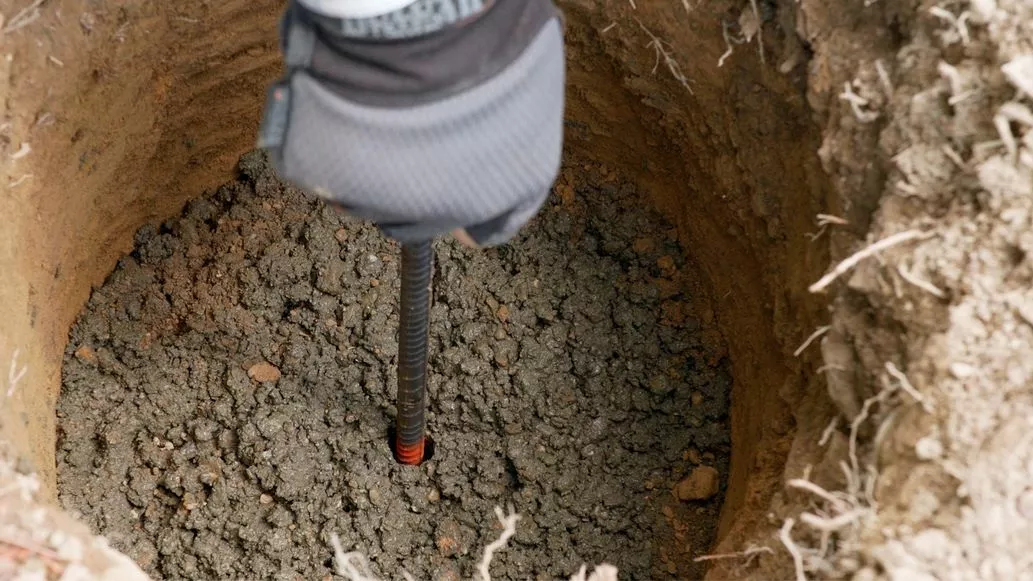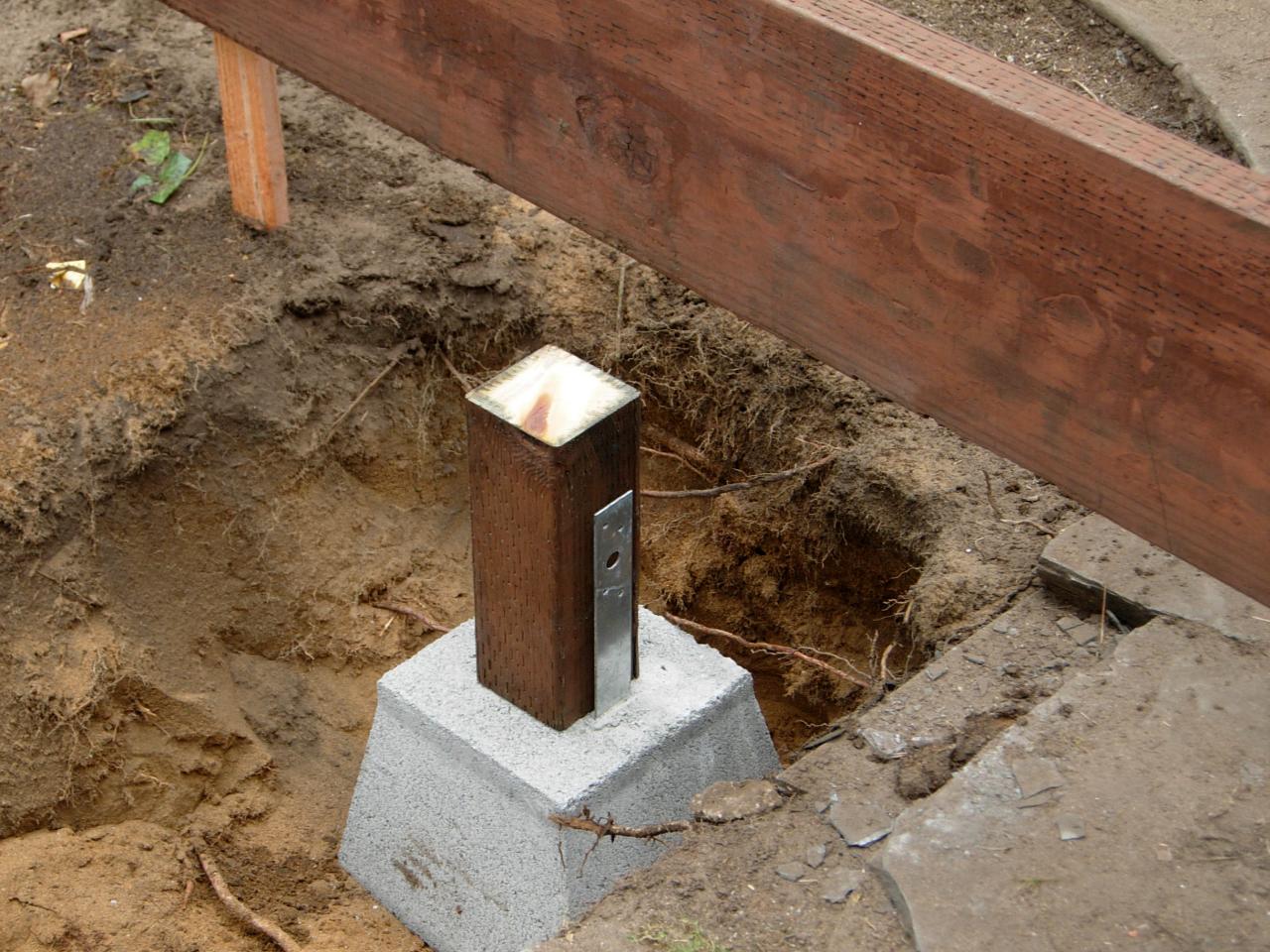Choosing the Right Deck Footings for Security and Longevity
The long life and safety of your deck depend heavily on the kind of grounds you pick, as they offer the essential support and security to hold up against the test of time. In this discussion, we will explore the numerous types of deck grounds, consider the essential aspects to consider when making a decision, and delve into the pros and disadvantages of various alternatives.
Sorts Of Deck Footings
There are a number of kinds of deck grounds that can be made use of, each offering distinct advantages and considerations. One usual kind of footing is the concrete pier footing. These grounds contain a round opening filled with concrete, which offers a solid structure for the deck posts. Concrete pier grounds are relatively simple to mount and offer outstanding security, making them a preferred selection for numerous deck jobs.
Another sort of footing is the helical stack footing. Helical stacks are steel shafts with helical plates connected to them. These grounds are installed by screwing them right into the ground, which creates a safe structure for the deck. Helical heap grounds are ideal for locations with tough soil conditions, as they can be mounted in practically any type of soil. If required., they also allow for very easy modification and progressing of the deck.
Additionally, some contractors choose precast concrete grounds. These footings are made of resilient concrete and come in numerous sizes and shapes to suit various deck styles. Precast concrete footings are convenient to mount and supply a steady base for the deck framework.
Lastly, another alternative is the post-in-anchor footing system. This kind of footing entails driving a metal support right into the ground and attaching it to the deck blog post. It uses flexibility in regards to positioning the deck blog posts and appropriates for decks with light-weight structures.
When choosing the appropriate sort of deck footing, it is necessary to take into consideration aspects such as dirt conditions, deck load, and regional building ordinance (Deck Footings). Consulting with an expert service provider or structural engineer can assist ensure the proper footing is selected for a secure and steady deck
Factors to Take Into Consideration When Picking Footings
When picking the suitable grounds for a deck, it is important to meticulously take into consideration numerous elements such as dirt conditions, deck tons, and adherence to regional building ordinance. These variables play a substantial role in guaranteeing the stability and longevity of the deck structure.
One of the primary elements to think about is the soil conditions. The kind of dirt on which the deck will certainly be constructed establishes the sort of grounds called for. Decks built on loose or sandy soils might call for much deeper grounds to supply appropriate assistance and stop settling. On the various other hand, decks constructed on clay or large soils may call for grounds that can suit the dirt's propensity to increase and agreement.
An additional vital aspect is the deck tons. The weight of the deck, including the materials made use of and any type of potential live lots such as furniture or gatherings, have to be thought about when choosing footings. The grounds should be designed to bear the weight of the deck and disperse it evenly to prevent any kind of structural issues or failings.
Lastly, adherence to neighborhood building codes is paramount. Building regulations vary from area to region, and it is important to follow the certain requirements established by the local authorities. Deck Footings. These codes make certain that the deck is developed safely and satisfies the essential criteria for structural honesty and hop over to here load-bearing capability
Concrete Grounds: Pros and Cons

When utilized as the structure for a deck,Concrete grounds provide a number of benefits and negative aspects. On the silver lining, concrete footings supply superb stability and toughness. Concrete is a rigid and strong material that can sustain hefty lots and withstand different weather condition problems. It also has a long life expectancy, making it a reliable option for lasting usage.
An additional benefit of concrete footings is their flexibility. They can be poured into different forms and dimensions to suit numerous deck layouts and arrangements. Concrete grounds can be customized to fit the particular requirements and demands of the deck structure.
Nevertheless, there are also some disadvantages to utilizing concrete grounds. One significant negative aspect is the expense and labor associated with their installment. Concrete grounds require excavation and usually need the support of heavy equipment. This can raise the general expense of the deck project and might need professional assistance.

Helical Piers Vs. Sonotubes: Which Is Better?
In considering the foundation options for a deck, the contrast in between helical piers and sonotubes is crucial in determining the exceptional choice. They are twisted right into the ground making use of hydraulic equipment, supplying a steady and long lasting foundation for the deck.
The helical plates on the piers develop a strong grasp with the dirt, avoiding any motion or shifting of the deck. Sonotubes, on the various other hand, depend solely on the concrete filling up for stability, which might not offer the exact same degree of stamina and resistance.
In terms of setup, helical piers are relatively less complicated and faster to install contrasted to sonotubes. The hydraulic machinery utilized to turn the piers into the ground makes certain a fast and efficient procedure. Sonotubes, on the other hand, require excavating openings and pouring concrete, which can be taxing and labor-intensive.
In addition, helical piers are an even more versatile choice. They can be used in numerous dirt conditions and can be readjusted or reinforced if required. Sonotubes, on the other hand, might need additional support, such as rebar, in specific dirt conditions or areas with high lots demands.
Selecting the Right Footings for Your Deck's Measurements
For ideal structural stability, it is necessary to thoroughly select the proper footings that align with the measurements of your deck. see this website The dimensions of your deck, including its length, height, and size, play a considerable function in figuring out the type and dimension of grounds called for.
When selecting grounds for your deck, it is essential to think about the load-bearing capability of the soil. The weight blog here of the deck, integrated with the weight of any type of furniture or people on it, exerts a considerable force on the footings (Deck Footings). It is critical to pick grounds that can sufficiently support this weight without shifting or sinking over time.
Bigger decks with greater measurements need bigger grounds to provide enough security and support. The form of the footings, whether they are rounded or square, depends on the design and format of the deck.
Final Thought
Finally, choosing the ideal deck footings is critical for making sure stability and durability. Aspects such as the kind of grounds, the deck's dimensions, and the pros and disadvantages of different alternatives must be thought about. Concrete grounds use stamina and long life, however may be a lot more costly and time-consuming to mount. Helical piers and sonotubes have their own advantages and disadvantages. Eventually, picking the suitable grounds for your deck's details requirements is crucial for a durable and successful structure.
These grounds are composed of a round opening loaded with concrete, which provides a solid foundation for the deck messages. Concrete pier footings are fairly simple to set up and use superb security, making them a preferred choice for many deck projects.
Precast concrete footings are convenient to set up and offer a steady base for the deck framework.
It uses adaptability in terms of placing the deck blog posts and is suitable for decks with lightweight structures.
Concrete footings use numerous benefits and negative aspects when made use of as the structure for a deck.